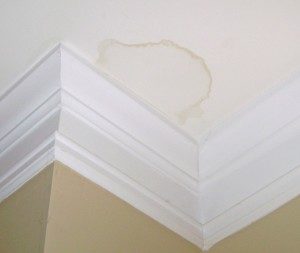The House's Common Common Leak Factors: Analysis
The House's Common Common Leak Factors: Analysis
Blog Article
How do you actually feel about Most Common Causes of Leaky Pipes?

Leakages not just cause waste of water yet can also create unnecessary damages to your home as well as advertise undesirable organic development. By understanding and looking for day-to-day situations that trigger leaks, you can secure your house from future leaks and unnecessary damages.
Trespassing origins
The majority of water leakages begin outside your home as opposed to inside it. If you see a sudden reduction in water pressure, say in your faucet, take some time to go out and examine your backyard. You might see wet patches or sinkholes in your backyard, which might suggest that tree roots are invading water lines creating water to permeate out. You can have your plumber check for breach, particularly if you have trees or shrubs near your residential or commercial property.
Corroded water systems
As time goes by, your plumbing system ages and also corrosion such as rust may start eating away the pipes. This might be the reason for discoloration or warping on your water pipes. This calls for an assessment with your plumber quickly. Consider replacing the pipes since they are at a greater danger of deterioration than the more recent versions if our plumbing system is old.
Malfunctioning Pipeline Joints
Pipe joints can weaken over time, resulting in water leaks. If you have noisy pipelines that make ticking or banging sounds, specifically when the warm water is transformed on, your pipeline joints are most likely under a whole lot of pressure.
Immediate temperature level adjustments.
Severe temperature adjustments in our pipes can trigger them to increase and also acquire all of a sudden. This growth and also contraction might cause cracks in the pipes, particularly if the temperature level are below freezing.
Poor Water Connectors
At times, a leak can be triggered by loosened pipes as well as pipelines that supply your appliances. In instance of a water links leak, you may observe water running directly from the supply line or puddles around your appliances.
Blocked Drains
Obstructed drains may be frustrating and also inconveniencing, but they can often wind up creating an overflow leading to burst pipes. Keep eliminating any type of products that might decrease your drains pipes that might block them to prevent such troubles.
All the above are root causes of leaks yet not all water leakages arise from plumbing leakages; some leakages could originate from roof leakages. All leaks need to be repaired immediately to avoid water damages.
Leakages not only cause waste of water but can additionally trigger unnecessary damages to your home and advertise unwanted natural growth. By looking and recognizing for everyday scenarios that cause leakages, you can safeguard your residence from future leaks as well as unneeded damage. Today, we will look at 6 leak triggers that might be creating your pipes to drip.
At times, a leakage can be caused by loose tubes and pipes that supply your home appliances. In instance of a water links leak, you may discover water running directly from the supply line or pools around your home appliances.
How To Check For Water Leak In Your Home
How To Check for Leaks
The average household's leaks can account for nearly 10,000 gallons of water wasted every year and ten percent of homes have leaks that waste 90 gallons or more per day. Common types of leaks found in the home are worn toilet flappers, dripping faucets, and other leaking valves. These types of leaks are often easy to fix, requiring only a few tools and hardware that can pay for themselves in water savings. Fixing easily corrected household water leaks can save homeowners about 10 percent on their water bills.
To check for leaks in your home, you first need to determine whether you're wasting water and then identify the source of the leak. Here are some tips for finding leaks:
Take a look at your water usage during a colder month, such as January or February. If a family of four exceeds 12,000 gallons per month, there are serious leaks.
Check your water meter before and after a two-hour period when no water is being used. If the meter changes at all, you probably have a leak.
Identify toilet leaks by placing a drop of food coloring in the toilet tank. If any color shows up in the bowl after 10 minutes, you have a leak. (Be sure to flush immediately after the experiment to avoid staining the tank.)
Examine faucet gaskets and pipe fittings for any water on the outside of the pipe to check for surface leaks.
Undetected water leaks can happen without the home or business owner even realizing. If you suspect a water leak, but not able to find the source. It is time to contact a professional water leak detection service, The Leak Doctor.
How To Find a Water Leak In Your Home
https://www.leakdoctor.com/blog/How-To-Check-For-Water-Leak-In-Your-Home_AE197.html

Do you enjoy more info about How to Find Water Leaks? Give a review directly below. We'd be interested to know your reactions about this blog. In hopes that you visit us again later on. Sharing is good. One never knows, you will be helping someone out. Thanks a bunch for your time. Don't forget to check our blog back soon.
Efficient help? Call! Report this page